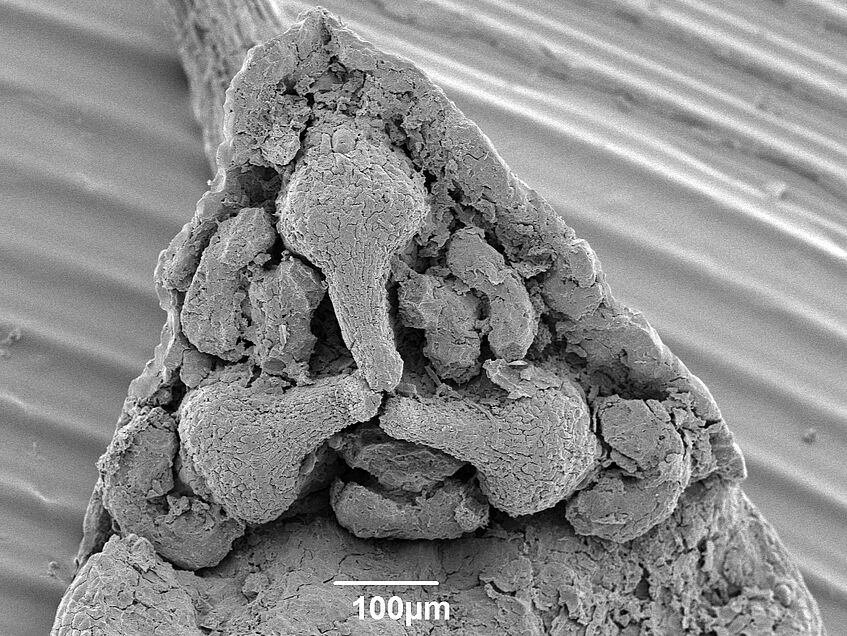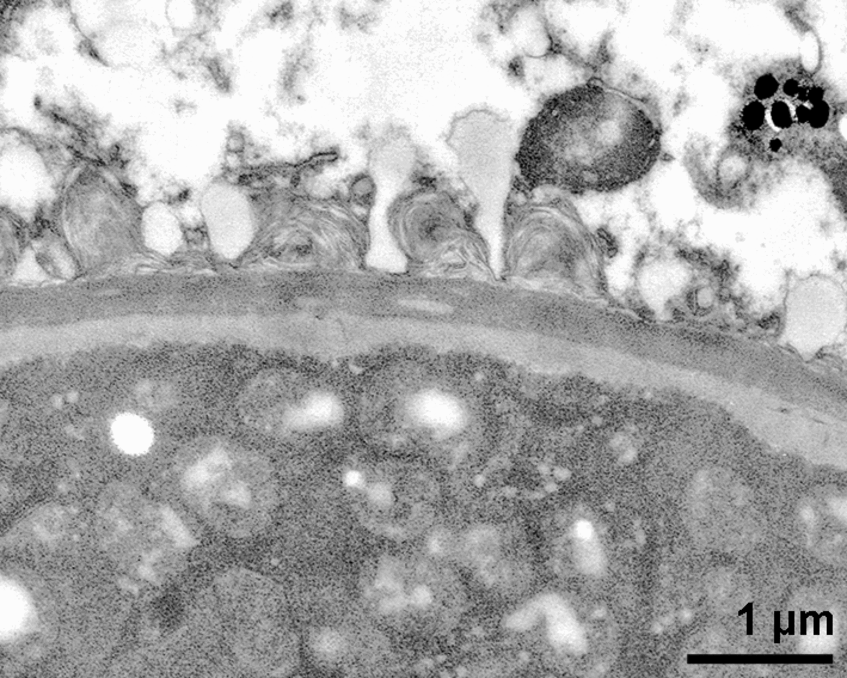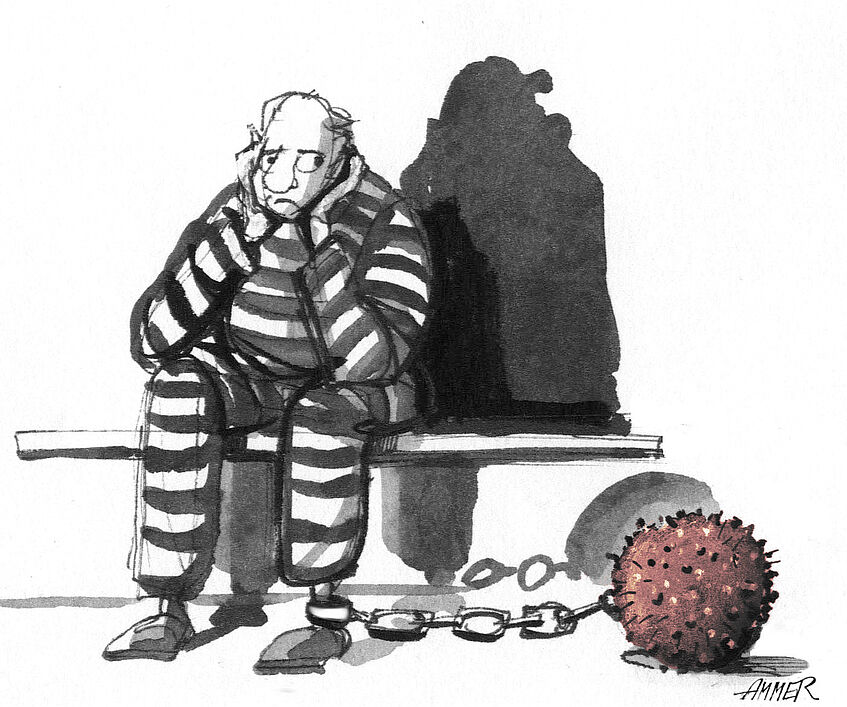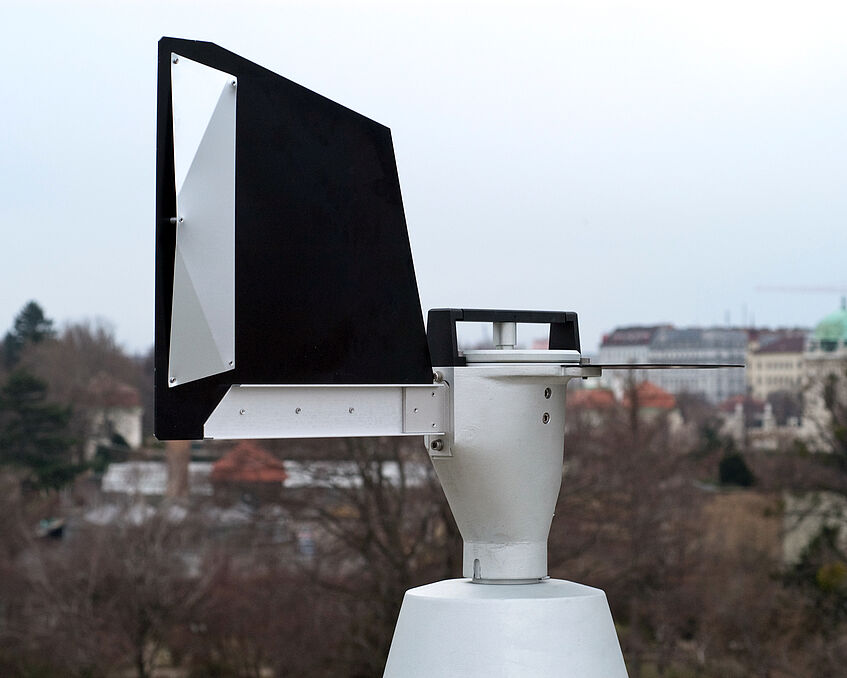Paleobotany

SEM image of a trimerous flower from the Late Cretaceous of Southern Bohemia © X. Wu

TEM image of Anubias afzelii © Hesse

REM image of Anubias heterophylla © Hesse
Fossil flowers are essential for our understanding of the evolutionary history of angiosperms and paleobotanists have recovered a rich fossil record that dates back to the early stages of angiosperm evolution in the Cretaceous. In particular, the recovery of so-called "charcoalified mesofossils" from Cretaceous localities in Europe, North America, and Japan has provided novel and unexpected details about the structural and phylogenetic diversity of early angiosperms and their flowers. These exceptionally well-preserved fossils in combination with novel technical applications such as high-resolution x-ray computed tomography have revolutionized our understanding of the early evolutionary history of angiosperms.
Palynology ist the study of palynomorphs, mainly of spores and pollen grains. They are formed within sporangia or anthers and represent reproductive dissemination units. The spores of mosses and ferns are single-celled, while pollen grains of seed plants (gymno- and angiosperms) consist of two or three to several cells, all of them contained within the spore or pollen wall. This wall is called sporoderm and comprises two distinct regions. The inner region, or intine, is composed mostly of cellulose. The outer region, or exine, is principally composed of sporopollenin, a macromolecule that is resistant to decay. The exine is further characterized by several ultrastructural layers and by diverse sculptural elements.
Particular features of pollen and spore morphology are important characteristics of taxonomic ranks, reflecting evolutionary or phylogenetic relationships. Distinguishing characters include apertures (the germination sites), ornamentation patterns (the sculpturing), manifold variation in exine infrastructure, and pollen or spore dimensions. Palynological characters are especially useful when evaluated systematically in conjunction with other features, for example, morphological and/or molecular-based characters.
Palynology serves as a basic science as well as in subdisciplines of applied sciences. Subdisciplines of palynology are, for example, aeropalynology, melissopalynology, or forensic palynology. Palynology plays an important role in the study of plant systematics, past vegetation, climatology, paleontology, geochronology, biostratigraphy, pollination biology, genetics, or other studies.
Forensic Palynology

Forensic Palynology
Pollen is an invisible witness. Forensic Palynology uses pollen (and spores) to solve crimes. Pollen is useful in forensic investigation, because it is microscopically small, the pollen wall is extremely resistant to decay, and the pollen morphology allows to correlate pollen to a plant genus, sometimes even to a plant species.
Forensic Palynology can answer questiones like: Can we link an object or a suspect to a scene of crime or discovery scene? Is the discovery scene the crime scene? When and where was the crime committed? Where do illigal drugs or other items originate from? Is safran or honey faked?
By the way: One of the worldwide first cases where pollen was used as a forensic tool to solve a murder crime occurred in Austria.
Aeropalynology

Pollen trap
Aeropalynology
Aeropalynology - a special research field in applied palynology - is concerned with airborne pollen and spores. Many people are suffering from hay fever, allergic asthma etc. triggered by these airborne palynomorphs.
Research projects
- PalDat - Palynologische Datenbank
- Korreliert in-situ Pollen fossiler Blüten mit Insekten? (FWF-Projekt P 34303-B)
- Out of Africa: did plants disperse via the Gomphotherium land bridge? (FWF-Projekt P 29501-B25) - finished
- Monitoring des Pollenfluges - finished
